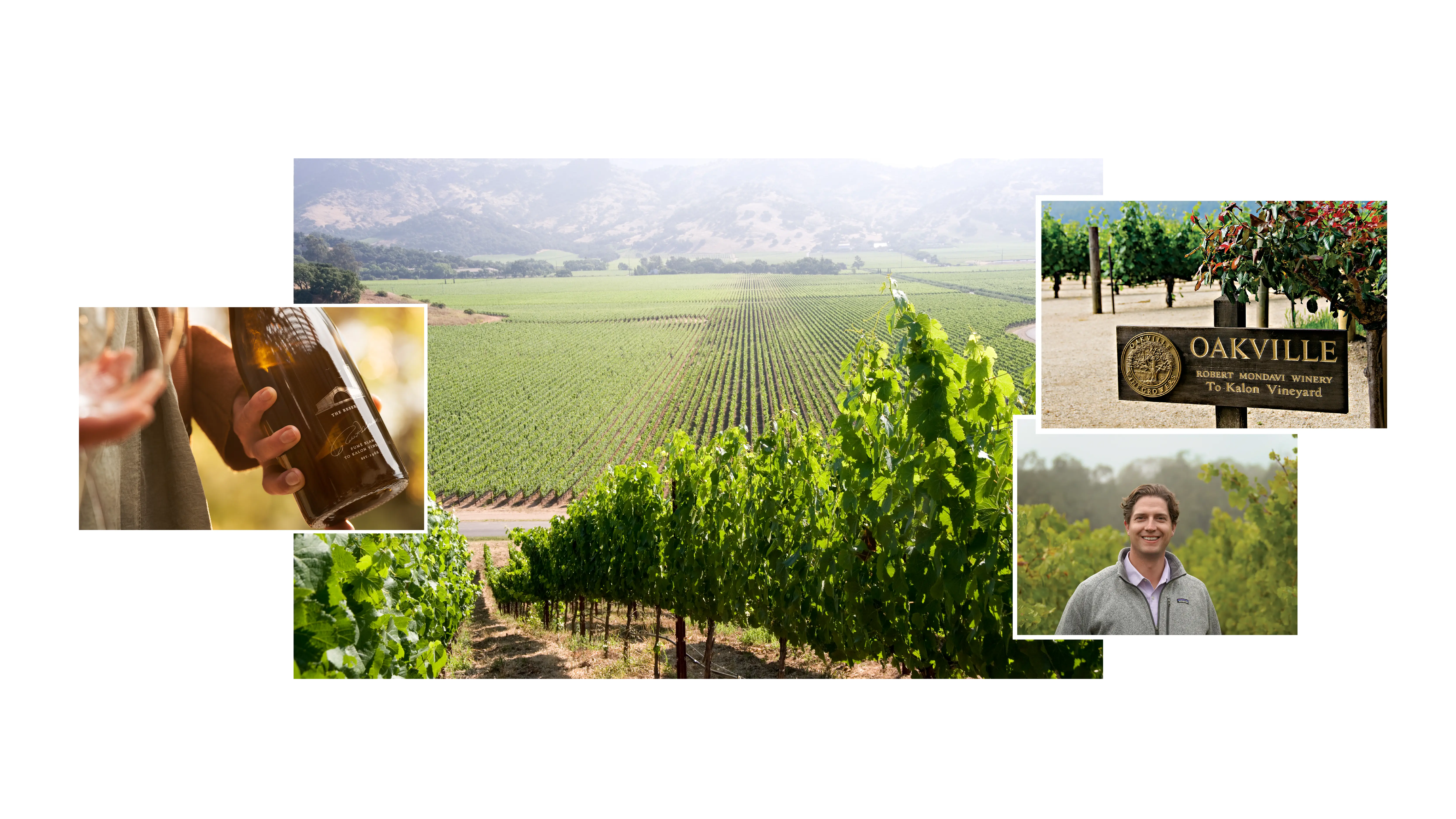The vineyard that sets the standard

With over 150 years of winemaking tradition rooted in its soils, To Kalon yields heritage you can taste.
As I walked the property, admiring its contours and vines, smelling the richness of its soil, I knew this was a very special place. It exuded an indefinable quality I could not describe, a feeling that was almost mystical.
So recalled Robert Mondavi in his 1999 memoir “Harvests of Joy.” He was writing about To Kalon Vineyard, the fabled site of Robert Mondavi Winery and, for six decades, the source of its most exceptional fruit. At 450 acres, To Kalon is one of Napa’s largest vineyards—and its most distinguished. Named by Wine Spectator as “the most famous vineyard in America,” it is revered for the coveted Cabernets crafted from its harvest.
Yet what makes To Kalon so extraordinary is not easily defined.
It begins with the vineyard’s microclimate. Situated in the heart of Oakville, To Kalon enjoys a rare equilibrium between Napa’s warm north and cooler south. Afternoon sun is tempered by fog from San Pablo Bay, extending the growing season and allowing for slow, even ripening. Winter rains arrive just as the vines need them. Nestled between the Vaca and Mayacamas Mountains, the site benefits from natural airflow that prevents heat stress and enhances color, texture, and depth.
The soils are no less exceptional. To Kalon lies on a deep alluvial fan with excellent drainage, encouraging deep root growth and limiting excess water. Gravelly, loamy soils force the vines to struggle, concentrating flavor and complexity. An ancient alluvial flow has created micro-terroirs across the site, yielding a remarkable range of grape expressions, even within a single block. Near the Napa River, fluvial soils add mineral nuance. This diversity gives winemakers a vast palette to work with, and certain blocks—Monastery, source of the Reserve Cabernet, and I Block, home to America’s oldest Sauvignon Blanc vines—have earned acclaim in their own right.
To Kalon’s value also lies in its genetic diversity. A wide array of clonal material and rootstocks offer flexibility in the vineyard and balance in the blends. The viticulture is meticulous, combining scientific precision with sustainable farming to elevate the fruit. Today, most of To Kalon is certified organic. “We encourage the vines to have an authentic experience in their environment,” says director of vineyard operations Blake Wood, “so that the wines more purely express the site.” Sophisticated mapping and modern methods and analysis reveal clues to soil composition and ripeness, guiding the creation of new block subdivisions and advancing a deeper understanding of the land.
And, of course, there is the legacy. In 1868, Ohio native Hamilton Walker Crabb came west in search of gold, and found it in Napa’s terroir. He named the land To Kalon, Greek for “the highest beauty.”
In truth, no single element defines To Kalon. It is all of these reasons—and more—that make it one of the world’s great vineyards. As Mondavi himself wrote:
As I walked, I felt a powerful, almost inexpressible connection to this land. I simply knew it was the place.
And today, its greatness endures in every glass.